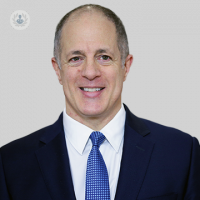Say goodbye to varicose veins
Escrito por:Whether your varicose veins are a cosmetic concern and look unsightly, or a medical concern that causes your legs to ache, swell or cramp, there are plenty of treatment options to have them removed. We've asked one of our leading consultant vascular surgeons, Mr Ian Franklin, what the options for varicose vein removal may be.

When can varicose veins affect your health?
Varicose veins are lumpy tortuous veins on the legs. Sometimes they are painless, but some individuals may notice aching, itching, congestion, swelling and cramps. Varicose veins are part of a spectrum of vein disorders. At one end are simple thread-veins which are unsightly but harmless.
In more severe cases, varicose veins can cause complications like phlebitis, deep vein thrombosis and varicose eczema. The worst cases result in ulcers, painful open wounds which may take a long time to heal.
Can varicose veins be prevented?
Varicose veins worsen slowly over time so if they are causing symptoms it is a good idea to have them checked. Unsightly veins can be treated to improve cosmetic appearance. There is no lifestyle change or medical treatment that can prevent the development of varicose veins but they tend to be more uncomfortable in people who are overweight.
What are my treatment options?
There is a multitude of treatment methods for faulty veins depending on the patient’s symptoms and priorities and the shape and anatomy of the problem vein. An ultrasound scan which takes around 45-minutes is always helpful to choose the best treatment. All modern methods are minimally invasive.
Veins can be treated under local anaesthetic or sedation and general anaesthetics are seldom needed. Often the process is staged, with the main abnormality corrected to start with, then any cosmetic fine-tuning performed later to achieve the best aesthetic result.
You can book an appointment with Mr Franklin via his Top Doctor's profile here if you would like to discuss your options for varicose veins removal.


